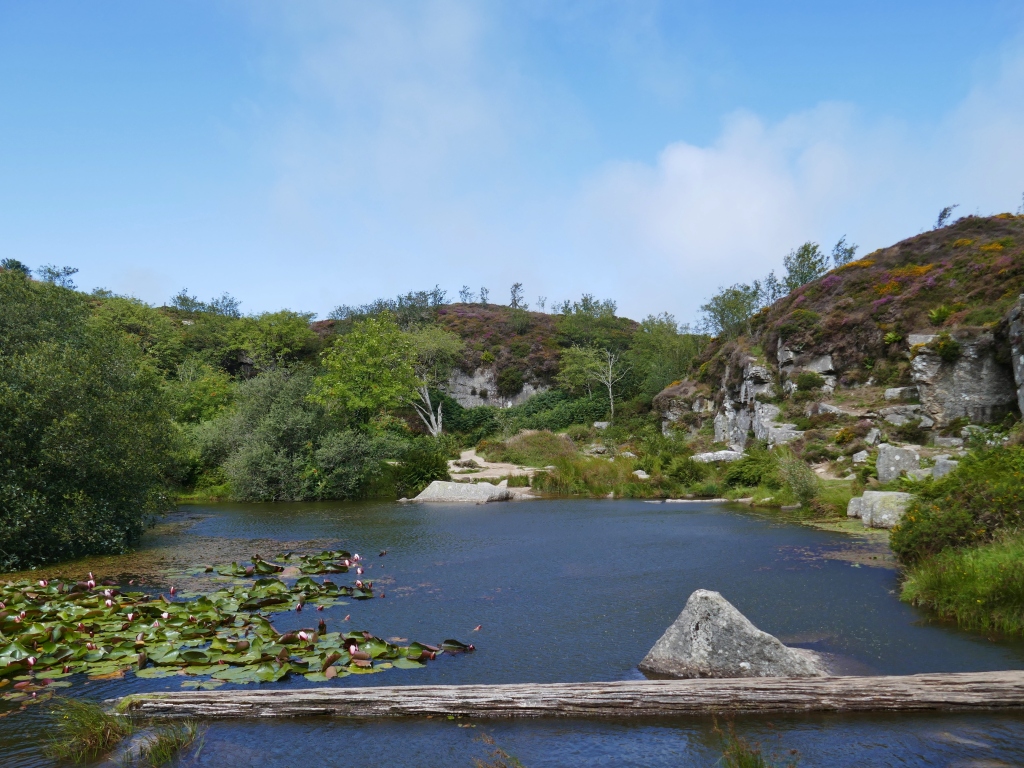
Haytor ( aka Hey Tor ) on the east of the Dartmoor plateau in Devon, near Bovey Tracey, is one of the most famous of Dartmoor’s granite Tors, remnants of 260-290 million year old igneous plutonic intrusions, [1] and the Haytor quarries beneath the tor are famous for their role in building London. Haytor refers collectively to 5 quarries, Haytor, Holwell, Rubble Heap, Emsworthy and Horraburrow. [2]

The Haytor quarries were used to extract two types of usable granite, the Blue and Giant Granite, [3] and the former was most famously used in London for the Rennie’s London Bridge [ see previous Building London posts ] but also many other buildings.

“A granite quarry northeast from the Hay Tor Rocks. Worked for the ‘blue’ granite between 1820 and 1918 as building material. The quarry contains three types of granite. A ‘blue’ granite which was mined and used for buildings such as the (reconstruction of) London Bridge found in the middle of the quarry, an ‘orange’ granite which had been heavily weathered and crumbled very easily (making it useless as a building material) found at the top of the quarry and the giant, ‘megacrystic’ granite that is typical of the Hay Tor region found on the quarry floor. The blue granite and orange granite are intrusions into the megacrystic granite, with the orange granite overlying the blue granite.” [4]
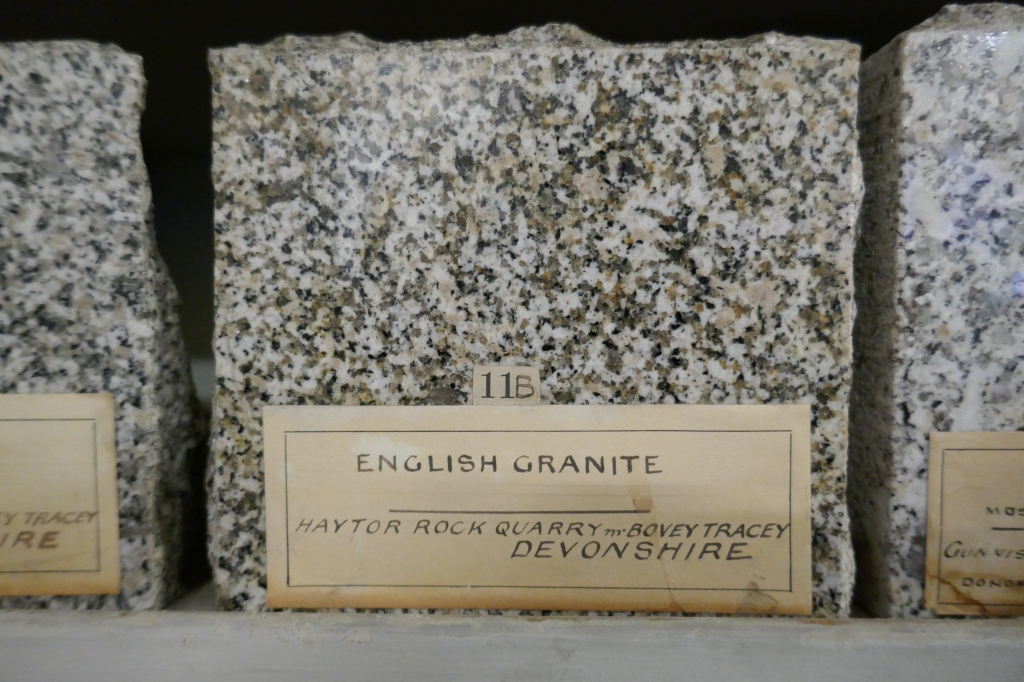
“…evidence shows that the ‘ giant granite’ is a thick, sheet-like mass overlying another, and later, granite which was intruded before the former had cooled to complete rigidity. This lower sheet is known locally as the ‘ blue granite’, the type locality for which is the Haytor (east) quarry … The structural relationship between the two types is clearly seen in the Haytor area.” [5]
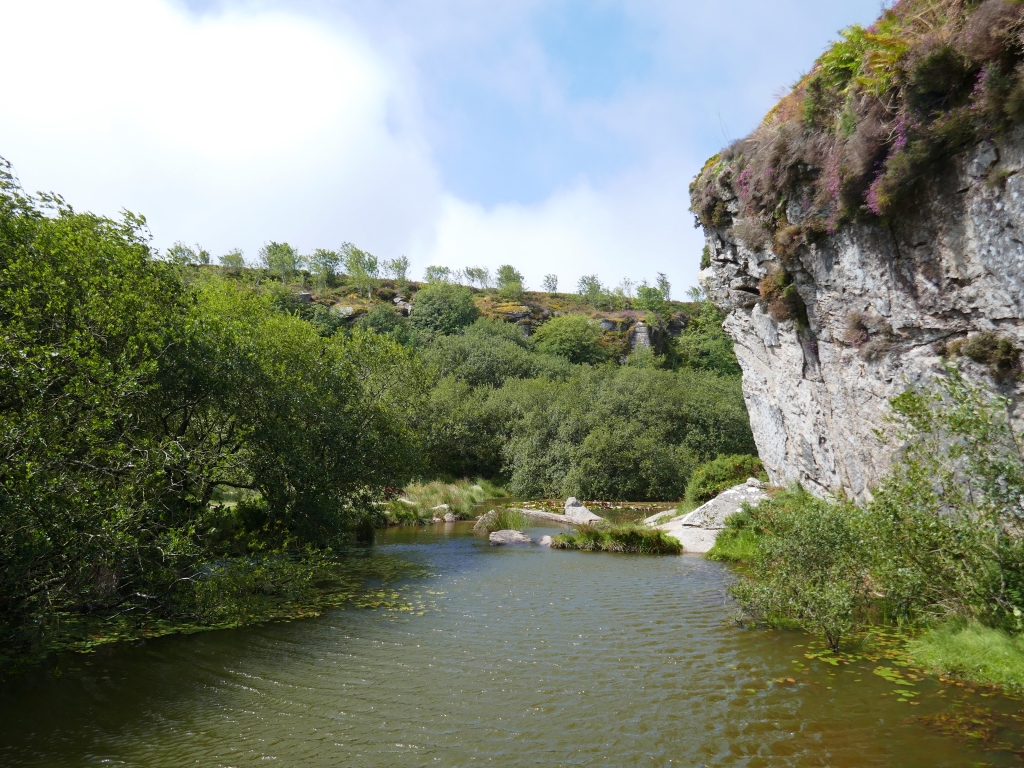
For more on the geology see these article by Chris Popham of the Open University Geological Society ‘Dartmoor Granite, Tor Formation and the Haytor Granite Tramway’ [6] and report back of his field trip ‘Haytor and the Granite Tramway’ [7]

The main quarry seems to have opened around 1820 and the different quarries were worked on and off till 1921. It’s was initially very admired and a report in The Times of 12 May 1826 stated “Yesterday a meeting of the Devon Haytor Granite and Mining Company was held at the London Coffee House: … The report represented that the granite at Haytor was of a very superior quality; that the quarries were situate 15 miles from Exeter, and 12 from Teignmouth. There were considerable conveniences for conveyance; a granite rail-road had been formed. They were, in fact the finest quarries in Europe: they had supplied granite for the new London Bridge, for that part of the Customhouse which was to be rebuilt, for the church and hospital at Sheerness, and the West India Docks.” [8]
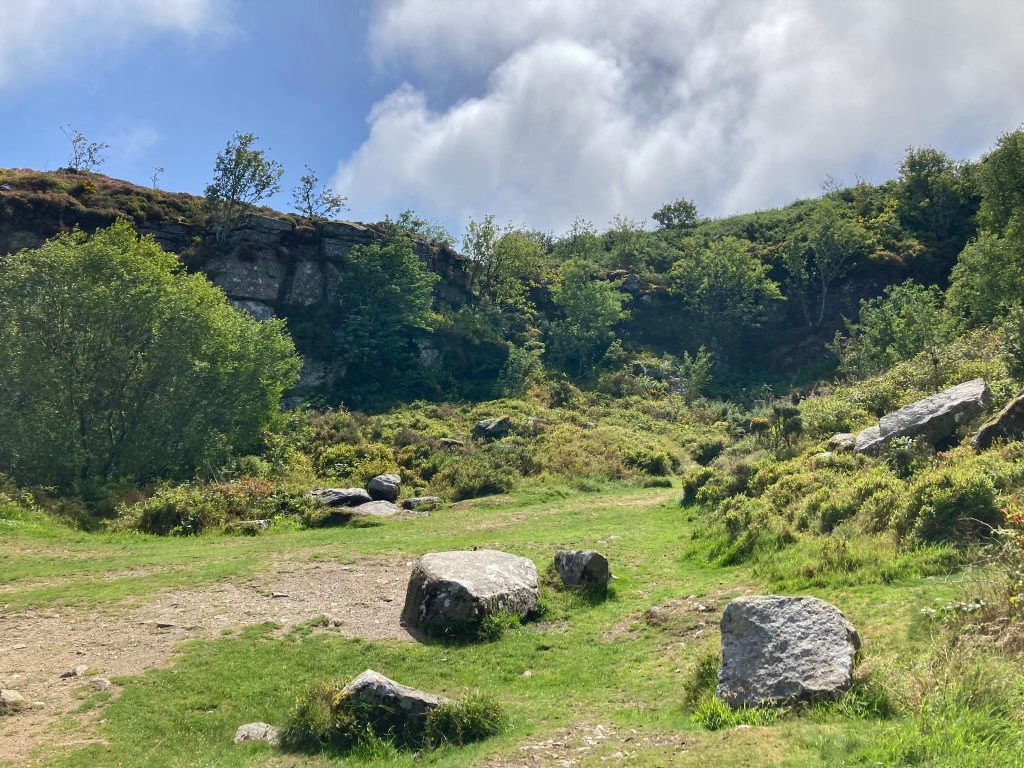
Haytor was only ever open for short periods. A Haytor Granite Company was set up in 1825 but after the finish of London Bridge it appears to struggle and was shut in 1829. A number of other companies were set up, and failed, over the years. The quarry closed for a while in 1836, re-opened in 1842, was bought by a London firm in 1849 and supplied some stone for bridges and road and pavements but was shut again soon after. The quarries were re-opened again in the late 1860s, though on a much smaller scale but still with contracts with councils in London, maybe for paving or monumental use.

Haytor’s problems seem initially that they could not produce the amount contractors wanted but soon it became uncompetitive with Cornish and Scottish granite which was more easier transported to the sea and so was cheaper to get to London. Scandalously in the 1830s a Haytor Granite Company sold granite from the Princeton and Foggintor quarries as Haytor granite, due to Haytor’s better reputation. [9]

Haytor Tramway
The Haytor quarries were, and are, famous also for their granite tramway or ‘Granite Railroad’. [10] The railroad was unique in that it’s guiding track is carved from granite rather than cast in iron. This was completed in 1820, and remarkably much of the higher sections can still to be seen on Dartmoor, 200 years later! [11][12][13]
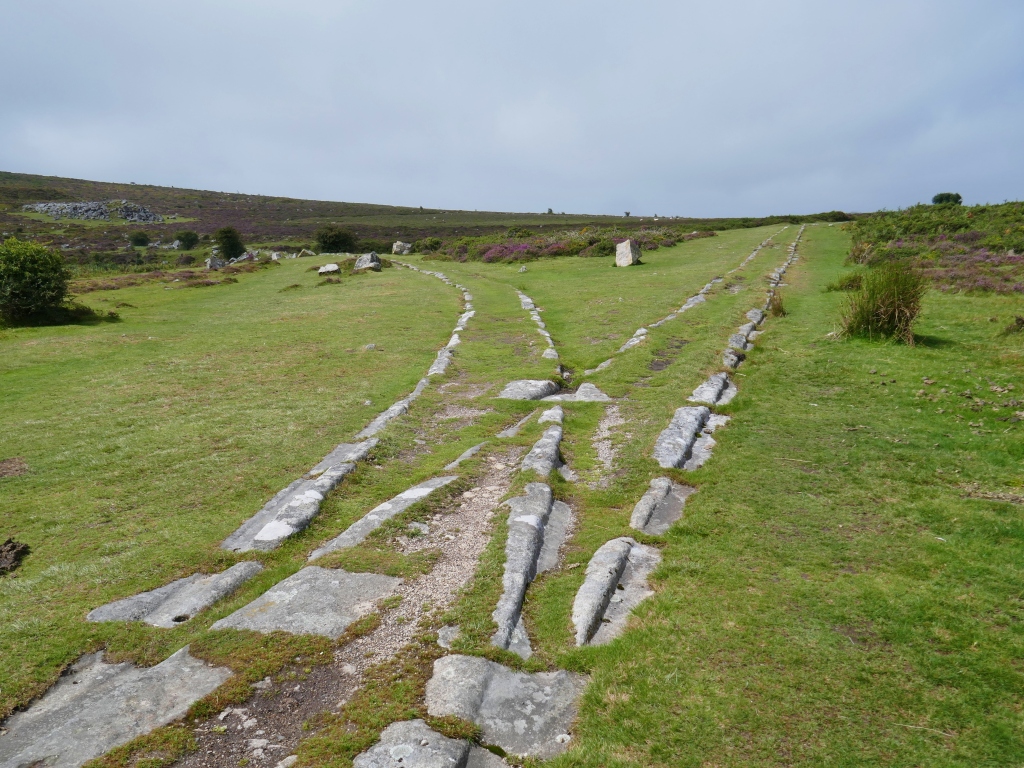
The ‘granite railroad’ connected with the older Stover Canal, [14] which took the granite to the Teignmouth New Quay, built in 1825-7. The Stover Canal was built in 1790-2 for transporting ‘ball clay’, [15] and some of that also ended up in London e.g. for making Coade Stone, used for the Westminster Bridge lion [16] [ Building London will look at Coade Stone in more depth in the future ]

https://www.teignheritage.org.uk/index.php/board-8-the-ship-inn

The granite tramway ran 8 and a half miles to the canal with a drop of 400m. The descent was by gravity and horses pulled the trams back up.Stanier noted a report of it’s opening in 1820 “The Haytor Tramway line was officially opened on 16th September 1820, amid “high jinks and dances on the turf”, and a poem written to celebrate the grand event described: “Nineteen stout horses it was known, From Holwell Quarry drew the stone, And mounted on a twelve-wheeled car, ‘Twas safely brought from Holwell Tor.” [17]
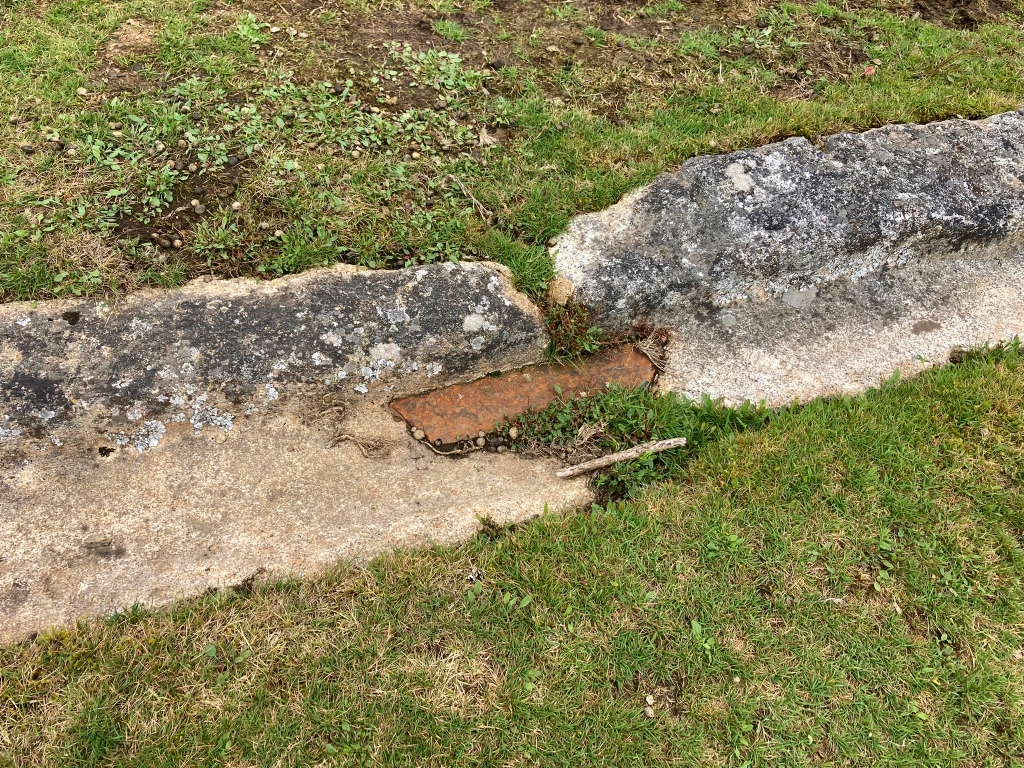


Use in London
Haytor granite was most famously used in the Rennie London Bridge, see https://buildinglondon.blog/2023/04/08/61-re-discovering-rennies-london-bridge-at-london-bridge/, and it seems the quarry maybe have been opened with that in mind. Drabble notes Haytor granite was specified at an early date: “Haytor granite had been tried and proved already in several local buildings, and Templer clearly had in mind the London Bridge contract (1825-31). This granite was, in fact, specified for the new bridge in 1824, along with Aberdeen granite.” … “The original contracts with Messrs. Joliffe & Banks specified the use of Haytor and fine-grained Dunleary granite for the exterior, and blue-grey Aberdeen granite ( from Dancing Cairns and Rubislaw Quarries) for interior work, as recommended by the Royal Society.” In the end“… 23,000 tons of Haytor were used at London Bridge including for the western side in light grey Haytor granite and the cut waters… ” and “ .. for substructure of the new Fishmongers Hall and for paving the stairs from the bridge, together with Blue Aberdeen, Herne and Guernsey granite” [9]


But that was not the end of Haytor granite’s uses in London. Drabble lists the following, amongst others, all identified from primary sources. [9] A number of the buildings have been demolished, though it would be interesting to know what happened to the blocks, whether they were reused elsewhere or simply broken for road stone.
West India Docks – maybe from 1820 – stated used at 1826 AGM – unclear where used.
Hoxton New Church – St John the Baptist – 1824-1826 – For railing plinths and gate posts
GPO – 1824-29 – Plinths and pediments. Demolished in 1913
London Bridge – 1825-1831
British Museum – Drabble states “Haytor granite was being supplied … in 1825” and used for the “East Wing”. [9]
Custom House – the rebuilt central portion 1825-1827 – Haytor along with Aberdeen.
Buckingham Palace – plinths of new wings 1826-1834
Covent Garden Market – 1828 – 1831 – Haytor “.. can be seen in the flagstones, columns and steps of the main market hall” Haytor couldn;t supply enough so Aberdeen granite was also sourced and used [9]
Christs Hospital School, Newgate – In 1829 used to build the Great Hall “…the cloister …is built of blocks of Hey Tor granite of massive and noble dimensions.” Demolished in 1902Hungerford Market – 1830-1833 – Demolished in 1860s for Charing Cross Station
Goldsmiths Hall -1830-1835 – Haytor or “Holwell Tor” plinth surmounted with Portland limestone.
Westminster New Bridewell Prison – 1830-1834 – Demolished in 1885, but Westminster Cathedral re-used the foundations when built in 1895. Fishmongers Hall – 1832-1835 – Used for south facing and so clearly visible from the riverside walk.
Atlas Fire Office – 1834 -1836 – King St, Cheapside – Plinth and cornice
Battersea Bridge – Some repairs in 1851
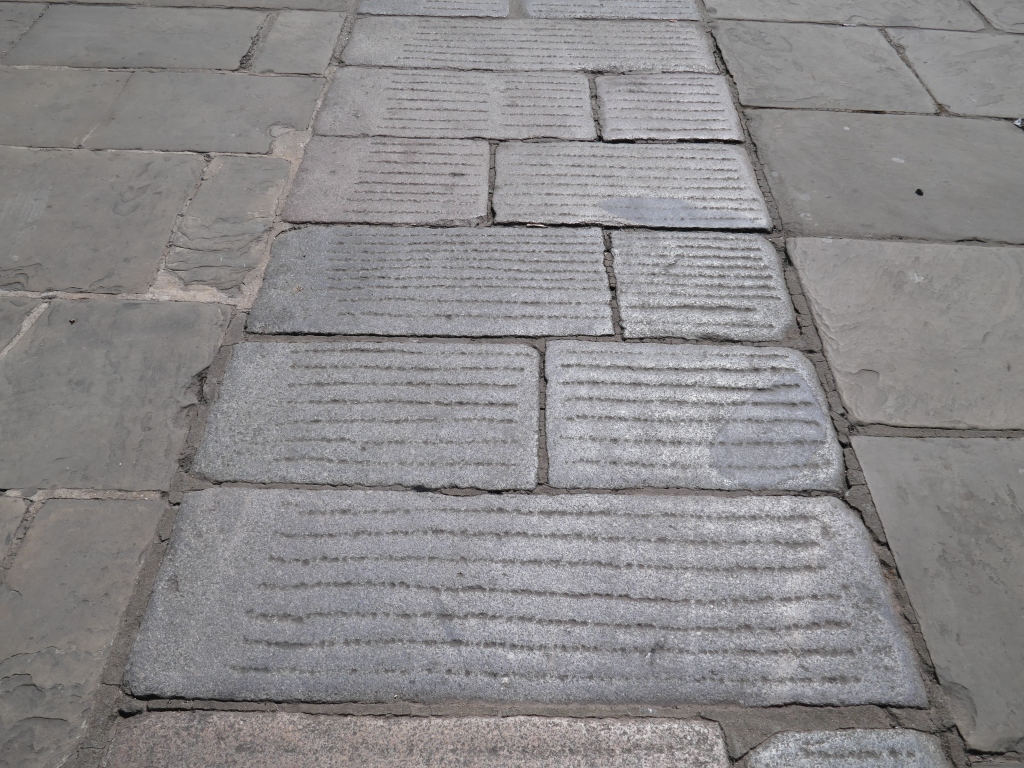
Granite from Haytor was so well used in London that in the 1820s “Haytor Granite Co., … had a Thames-side wharf at Southwark” which appears to be Hatherley’s Wharf at Bankside / Southwark Bridge and renamed Haytor Wharf in 1825. The Bankside wharf was sold however in 1836 and tons of kerbstone sold off, showing Haytor granite was used for kerbstone as well as building stone. In 1849 there was a new Haytor depot this time on Regents Canal at Mile End and later 100 people working at Rotherhithe Wharf [9].
Visting
Haytor, firstly, is a magnificent place to visit, so do it! Both “…one of the most impressive landmarks in Devon.” [18] and/or “…arguably Dartmoor’s most famous landmark.” [1] the tor can be climbed, with great views, but, beware, it gets very busy with tourists.

There is a Visitor Centre with car park, shop and toilets etc too. [19]
And secondly of course there are the quarries to explore and the main one is frankly very beautiful with it’s shimmering blue lake! And then there is the extraordinary granite tramway which can be walked for miles by following the Templar Way. [20] [21] [22] [23] There is more than meets the eye! [24] And that then takes you down to the Stover canal and thence to the sea at Teignmouth and it’s New Quay.
And of course all of Dartmoor is great to visit!

Getting There
It is possible to get to Haytor as a day trip from London. A fast train from Paddington to Newton Abbot takes 2 ½ hours or less, or of course more, and a bus onward to Haytor maybe an hour. It would of course be more logical to go camping, for the w/e or longer, in the area!
During the summer there is a more direct, and quicker bus from Newton Abbot to Haytor, the Haytor Hoppa. [24]
Cycling from Newton Abbot is takes c,. ½ hours for a 10 mile trip according to Google, but beware it is uphill all the way, and with an ascent of 1400ft! But of course that makes it an easy return trip!
And of course there is tons of walking in the area!
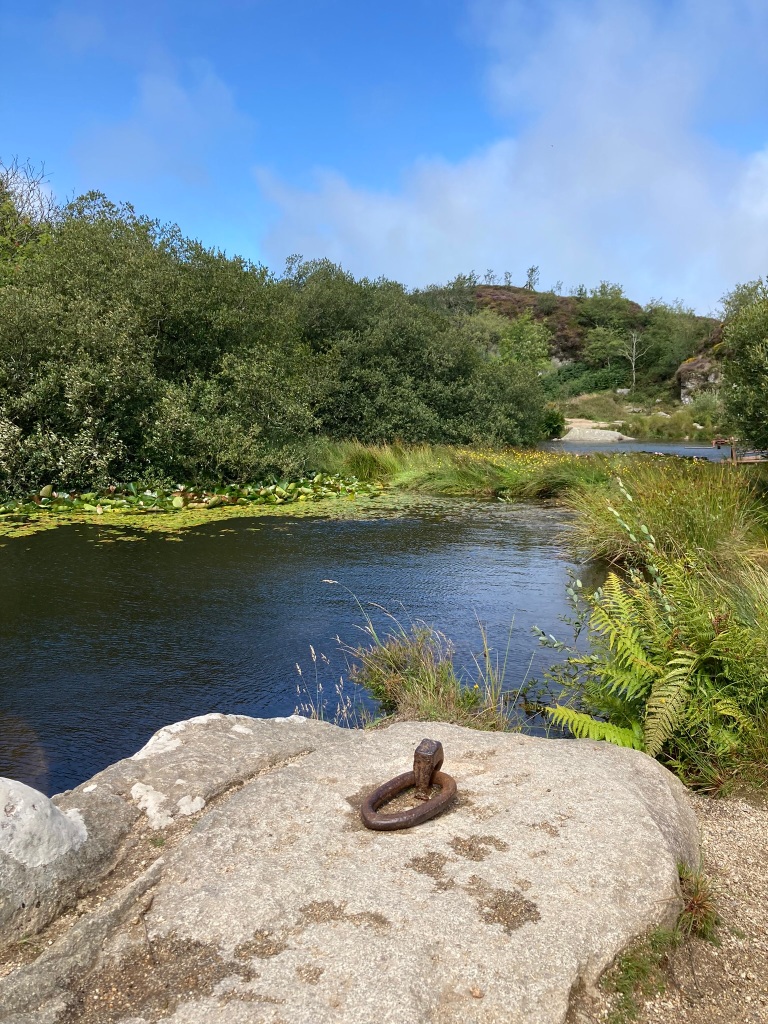
Books
– Haytor Granite – A Celebration – Stuart Drabble – The Stover Historic Landscape Trust 2018
– The Haytor Granite Tramway and Stover Canal – A Guide to Retracing the Route of Dartmoor’s Granite from Quarry to Sea – Helen Harris – Peninsula Press 1984
– South West Granite: A History of the Granite Industry in Cornwall and Devon – Peter Stanier – Cornish Hillside Publications 1999 (Sadly out of print and very expensive second hand)
References
[1] https://en.wikipedia.org/wiki/Haytor
https://www.heritagegateway.org.uk/gateway/Results_Single.aspx?uid=MDV8058&resourceID=104
[2] https://www.legendarydartmoor.co.uk/2016/03/17/haytor_quarries/
[3] https://historicengland.org.uk/images-books/publications/building-stones-england-devon/bse-devon/
[4] https://www.mindat.org/loc-292019.html
[5] https://rruff.info/doclib/MinMag/Volume_20/20-101-39.pdf
Dartmoor granite : its mineralogy, structure, and petrology. Alfred Brammall, M.Sc., D.I.C., F.G.S. Lecturer in Geology, and H. F. Harwood, Ph.D., M.Sc., A.I.C. Lecturer in Chemistry, Imperial College of Science and Technology, London.
[6] https://ougs.org/southwest/local-geology/97
[7] https://ougs.org/southwest/event-reports/212/haytor-and-the-granite-tramway/
[8] https://www.legendarydartmoor.co.uk/Images3/Devon%20Haytor%20Granite%20Company3.pdf
[9] Haytor Granite – A Celebration – Stuart Drabble – The Stover Historic Landscape Trust 2018
[10] https://en.wikipedia.org/wiki/Haytor_Granite_Tramway
[11] https://www.nationaltransporttrust.org.uk/heritage-sites/heritage-detail/haytor-granite-tramway
[12] https://www.abandonedspaces.com/industry/haytor-granite-tramway-unique-granite-railway-tracks.html
[13] http://www.cornwallrailwaysociety.org.uk/military-and-industrial-tramways–light-railways.html
[14] https://www.stovercanal.co.uk/
[15] https://en.wikipedia.org/wiki/Ball_clay
[16] https://en.wikipedia.org/wiki/Coade_stone
[17] The Granite Industry Of South-West England, 1800-1980: A Study In Historical Geography: Peter Stanier –
PhD 1985University of Southampton https://eprints.soton.ac.uk/413336/1/85075041.pdf
[18] https://www.torsofdartmoor.co.uk/tor-page.php?tor=haytor-rocks
[19] https://www.dartmoor.gov.uk/enjoy-dartmoor/planning-your-visit/our-visitor-centres/haytor-visitor-centre [20] https://www.atlasobscura.com/places/templer-way
[21] https://visitdartmoor.co.uk/get-active/the-best-dartmoor-walks/templer-way
[22] with interactive map https://ldwa.org.uk/ldp/members/show_path.php?path_name=Templer+Way
[23] https://www.exploredevon.info/activities/walk/long-walks/templer-way/ with several excellent Explorer maps in a PDF or just click here https://shorturl.at/cgmR6
[24] http://www.9fairfield.eclipse.co.uk/haytor/fmatrecon.htm
[25] https://www.dartmoor.gov.uk/enjoy-dartmoor/planning-your-visit/travel-information/haytor-hoppa
Leave a comment